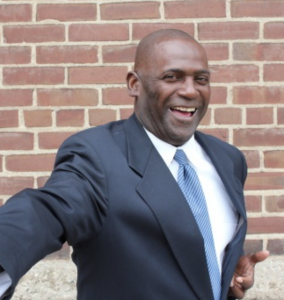
How to Leverage These 3 Leadership Skills in a Changed World


I asked Paul and Bobby to share with us their thoughts on how a Business Leader can successfully come out of a Covid-19 era.
The closing sentence of this article exemplifies why their voices are so important: We are Americans. We have been through the worst of times and the best of times. We have GRIT!!! Let’s live up to our legacy. We got this!
I want to talk about a critical issue that business leaders are facing: how to create a dominant position in today’s volatile marketplace.
In late January, President Donald Trump announced that, due to concerns about the deadly virus, COVID – 19 (which was later declared a pandemic by the WHO), he would be instituting indefinite travel restrictions. This included travel to and from China, where it was believed the virus had originated. Days later, the first cases of the virus were detected in America. Upon on this event, being advised by several of the top health experts in the world, the President promptly shut down all over-the-counter economic (business) transactions and requested that all American citizens take the Covid-19 virus seriously. He asked them to remain in their homes, observing the policy of social distancing for the purpose of slowing the spread of the virus.
Being compliant to the President’s request, Americans pulled together and shut down the economy, including all over-the-counter services of retail businesses, banks, and schools.
Prior to that, investor confidence was high and the economy was surging. Some suggest the greatest economy in the history of the United States. Record low unemployment rates across the board (3.6% in December), were poised to dive lower. Millions of jobs were being added every month. The highest Dow Jones Industrial Average in American history (29, 300 in December), was poised to break 30,000.
And then, in a moment, it was gone. The depth and speed of the decline rivaled that of the Great Depression. Within a month the DOW Jones average plummeted to 18,000. In the next two months, America had lost 40,000 jobs, sending the unemployment rate soaring to 14.47%. The Administration economically softened the fall with a $3 trillion stimulus package. Yet, the damage had been done.
Early in May 2020, as many states were re-opening and/or preparing to re-open, Officer Derek Chauvin, who was in the process of arresting George Floyd, placed his knee on the neck of Floyd for nearly 9 minutes, pressing down and causing Floyd to die. This ignited the most aggressive protesting (participation, duration, theft & property damage) in world history. The event caused protests, sometimes riots, to even spread to many major cities (economic circles) around the globe where people protested to show solidarity with the American movement.
So where does that leave us? What are the key variables that we need to identify and work to our advantage? Specifically, coming out of the Covid-19 pandemic, the civil rights demonstrations, and other critical issues of the day, what are the key drivers we need to understand and build on?
Corporate leaders face the monumental task of sustaining and growing their businesses. And this is happening in the midst of two significant, extremely complex, and highly visible public challenges: managing the aftermath of Covid-19 and the call for police reform.
These two issues are reshaping the way we think about our communities and businesses, and how exactly we will lead them to success.
Some businesses will not recover and it was not their doing.
America is changing, absolutely. But this change represents opportunity. Leadership will be a key variable. Will you lead from fear and take on a defensive posture? Or, will you lead with confidence, with a fire in your belly? Click To Tweet“It is a matter of choice and discipline.” These wise words were written by Jim Collins, author of “Great by Choice.”
As a turnaround expert, it became quite clear that there are 3 things leaders must be, or get good at, quickly. They are Leadership, Innovation, and Execution.
Leadership is a Critical Skill Set in Times of Calamity
It is in the worst of times that true leadership is recognized. Leaders are the emotional thermostat to those with whom they engage. They set the climate. Leaders either minimize anxiety or amplify it. The best leaders reduce anxiety by being radically transparent with their vision, plans, and data. They communicate clearly, accurately, and often. Doing so eliminates uncertainty. They also ensure every person and team has line-of-sight to the organization’s critical number and how they personally impact that number. When there is certainty, direction, and an understanding as to how people make an impact, there is no anxiety.
The difference between good leadership and great leadership is in the margins. This is similar to the Olympic gold medalist versus everyone else. Great leaders are more disciplined. They demonstrate greater rigor in their planning and preparation. They are more observational, guided by learning, research and testing. They are more cautious, constantly questioning the status quo and building in contingencies. And they depend on their team members to identify and solve the problems of the business. They reject being “the guy or gal” who has all the answers.
Fast-paced, unpredictable environments require a team-of-teams. The faster the pace of change, the more important the need for empowered teams to confront issues, make decisions and solve problems. Great leaders have the courage and discipline to ‘put a fork’ in the hero-leadership concept and focus on multiplying individual genius and building amazing teams. Decision-making is decentralized across departments and pushed closest to the action for faster, better results.
Highly effective teams require a culture that includes psychological safety. That is, a commitment culture based on shared values and strong emotional bonds. This happens when team members are engaged in whole-group debates. They are dealing with the brutal facts while maintaining focus on their mission, vision and long-term goals. The right people working in healthy teams will solve the toughest of problems.
Highly effective teams require shared vulnerability and interconnection. Vulnerability sparks trust and generates cooperation. The most powerful event for building trust is to admit weakness and where and when personal mistakes are made. In the Navy Seals, this is called an AAR, (After Activity Review). Leaders must go first. Success is about getting smarter and better as individuals and as teams.
Highly effective teams build high-purpose environments. Leadership continually connects the present moment with the future ideal. There is no room, time or excuse for naval gazing or bunkering. The long-term Big Hairy Audacious Goal (BHAG) is as important now as it ever has been. It provides the constant reminder and explains, “This is ‘why’ we work. Here is where you should spend your energy.”
Innovative Leaders Capture Opportunity
History tells us that opportunity is rich during and coming out of difficult times. There are accelerating changes in trends, both good and bad, depending on the industry you are in. Zoom went from 20 million to 200 million subscribers through the months of March and April. An opposite example is commercial office space. The work from home trend was gaining momentum before COVID-19 struck. The pandemic has served as a catalyst to expedite this trend. What was once a ripple has become a tidal wave. Large corporations are realizing they can have a highly productive, interconnected remote workforce with the technology tools presently available. Those who take advantage of technology to work from home will drive down overhead costs dramatically by reducing rental expenses.
Employees will improve their economic well-being by saving on fuel, parking, auto maintenance, and maybe even eliminating the need for a vehicle. Travel expenses of sales personnel will likely drop significantly as prospects and customers continue to engage through virtual platforms. Health and well-being is likely to improve as people get more sleep and have more time for leisure, productive work, exercise, etc. The bottom line is we must stay close to our customer(s). How are they changing their buying habits? Are the same things still important to them? Do they make buying decisions for the same reason? Are there new customers available to our products and service offerings? When the answers to these questions, and others like it, change, we must explore further, evaluate, and take appropriate response.
Innovation and opportunity is everywhere. As is disaster for the industries negatively impacted by these changes. In both situations, those companies that benefit the most, have leaders and teams who are able to understand the trends, see the opportunities, know when and how to shift, make choices, then scale with discipline.
Being decisive is a skill set that is essential to capture opportunity. It is not, however, taking unmerited risk, driven by the fallacy of speed to market, or first-mover advantage. Failing forward fast requires, once again, a disciplined approach of testing and validating, with minimal risk, until you have appropriately calibrated the opportunity. Then you can move forward boldly.
Successful scaling requires a market-dominating strategy that reveals the greenfield in the market and the unique set of activities that make you and your offering different and valuable to your core customer. Think Southwest Airlines. They became the only profitable airline and the most valuable stock to own – if you bought it when it first came out. They achieved this by identifying the greenfield in air travel. Then they built a business model from a set of activities that made them completely unique and extremely valuable to their core customer and investors.
Bold Execution Requires an Effective Organizational Structure

Having the right people in the right seats is essential. Functions focused on efficiency should never control functions focused on effectiveness. And functions focused on short term results should never control functions focused on long-term development. If your strategy changes, you will likely need to change your organizational structure.
You must have the right people in the right seats with a role alignment card that clearly defines the purpose of the position, the company’s critical number, the functional department’s critical number, as well as the critical number for the role.
The role alignment card must document the company’s priorities, the functional departments’ priorities and the individuals’ priorities for a 90-day period. The daily role responsibilities for each position must be clearly explained and listed in order of importance. The amount of time necessary to do the work should be noted, along with the outcome of their effort and how that outcome is measured effectively and efficiently. Done correctly, the Role Alignment Card creates clear role responsibility and line-of-site between the individual, their functional area, and the overall company goal.
When talent is recruited, they should be invited into the seat by their supervisor by asking three essential questions:
- Does the candidate understand the importance that this seat has in the company’s success?
- Does the candidate want this position, such that they are excited to own it? And,
- Can the candidate deliver on the expectations, clearly laid out in the positions role alignment card as an ‘A’ player?
Behavioral questions should likewise be asked around 3 values. You want to determine that the candidate is…
- Driven and accountable;
- Team focused versus ‘Me’ focused;
- People smart (has a strong Emotional Quotient)
When you have the right organizational structure with the right people in the right seats and working together in cross-functional teams, you get rapid, successful problem resolution, decisive action, and accountability. More issues are identified and better decisions are made faster.
The catalytic mechanism for rapid issue identification, resolution, decisions, and execution are meeting rhythms. The frequency and agenda of meetings are critical. Most people hate meetings because they are so poorly facilitated and they become a waste of time. Well-run meetings are welcome and essential to create “exit velocity”. Meetings of this nature create clarity, alignment, team health, accountability, and speed. The purpose and sequence of meetings include:
- Daily stand up – accountability, rapid awareness of stuck situations, team health.
- Weekly Team meetings – team Health, awareness, on-track performance, accountability, issues Identification, and resolution.
- Quarterly planning and Annual Planning – review organizational design, people, trends, issues, strategy and establish priorities for the upcoming period.
Most companies do not compete on their own. They, and their supply chains, compete. Just as you must have the right people in the right seats performing as “A” players, your supply chain must be selected and managed to the same standards. Coming out of this pandemic and dealing with change, you must reassess your supply chain and set them up for success as you have done with your people.
Summary
We are a resilient people. We have not only survived, but thrived, through the Revolutionary War; the Civil War; World War I; the Spanish Flu; The Great Depression; World War II; The Korean War; The Vietnam War; the civil unrest of the 1960’s; recessions in the 1970’s and 1980’s; the 2000’s .com bomb; 911; the Great Recession of 2008; SARS; and now, this!
In Jim Collins’ book, Great by Choice, a study of 10Xer entrepreneurial performers during periods of extremely difficult conditions, his research discovered that the 10Xers’ refused to be imprisoned by their circumstances or calamity. Each one remained steadfast in their freedom to choose. He concluded, “The 10Xer’s placed responsibility on themselves. Success was a matter of choice and discipline. The fate of each and every company is in the hands of its people.” No excuses.
“Americans have a history of superior performance amidst unrelenting uncertainty. To predict the future, you must create it.” Peter Drucker
We are Americans. We have been through the worst of times and the best of times. We have GRIT!!! Let’s live up to our legacy. We got this!
 Having challenges keeping your team engaged and focused in a productive direction? We invite you to schedule a free virtual coffee meeting with us. No charge, no obligation. Just 45 minutes to talk through what challenges are happening, receive personal tips, advice, and next steps on how to solve those challenges. To schedule, email me at danita@DanitaBye.com
Having challenges keeping your team engaged and focused in a productive direction? We invite you to schedule a free virtual coffee meeting with us. No charge, no obligation. Just 45 minutes to talk through what challenges are happening, receive personal tips, advice, and next steps on how to solve those challenges. To schedule, email me at danita@DanitaBye.com 


No Comments